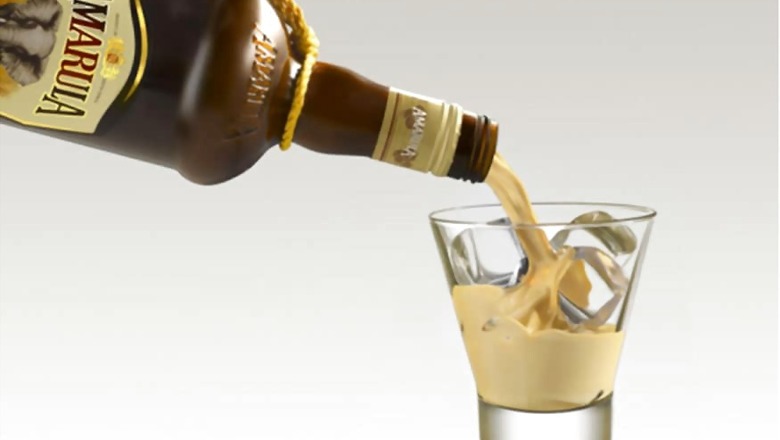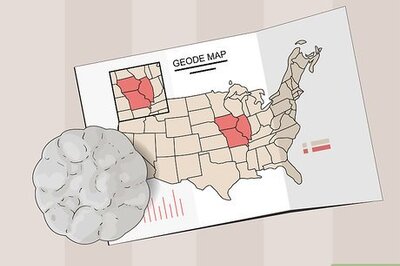
views
 For the baboon, the world has gone suddenly mad.
For the baboon, the world has gone suddenly mad.
To make sure he thrusts a few more fruits into his mouth and chews. He feels strangely glad amidst the blur. He totters for a few feet towards a mount he sees at some distance but falls to one side.
Meanwhile, the mount towards which the baboon was heading to is still lying on the ground in a daze, with its legs splayed, trunk twisted, tusks crookedly pointed towards heaven.
For one more time it tries to think normally as an elephant and trumpets.
Around him rhinos, warthogs, kudus, vervet monkeys, zebras, porcupines, giraffes – come and go, all wobbling around in utter gaiety.
We are under the sprawling branches of Marula tree in Swaziland (Most of you had watched such drama when you were children, in the movie, ‘Beautiful people’ Remember it?). Fruits, hundreds of yellow berries are strewn all over the ground, fermenting in the harsh weather.
To know what the hell is happening pick a few fruits, nibble them. You’re drunk, man. Welcome to the club.
Marula – the darling of animals, the spirit of Africa, a pint in a fruit (Characteristic crash of cymbal for hyperbole). One African folktale swears that Marula fruit is elephant tusk, reborn. Want to hear that story?
Listen.
Once upon a time there lived in the forest an elephant and a hare. The former could survive a drought season only with the help of his friend, the hare. Pleased, the elephant wanted to reward the hare. He tearfully gifted his friend with one of his tusks, which the latter promptly planted in his garden.
Many years passed. One day, the hare was reportedly shocked to see the planted tusk grown into a beautiful tree – Marula.
With Marula, the hare no more had to panic again during another drought (But with two such tusks why did the elephant suffer in the first drought? “You should never question old jungle sayings”: Old jungle saying).
Hope that explains why when the fruits ripen in January and February big herds of elephants begin to migrate towards the place where the trees are in plenty. Could be the call of their tusk (See… every drunkard invents a tale to get to the drink, be it a beast or a man).
So when the season opens, all roads in the forest lead to Marula trees. Not just elephants but all animals which can move an inch will be present for the carnival.
Archeologists say Marula goes a long way back to 10,000 BC. Men might have come to the scene a bit late, but when they finally came, they came prepared. They collected the creamy yellow berries from the ground, soaked them in water and sugar to help them ferment. A few weeks in the casks, the fermented liquid evolved into Marula beer.
The annual Marula celebration conducted in Swaziland is one of the most popular cultural festivals in Africa. People sipped the beer only after the royal family samples the brew they have made.
When the festival begins, women with eyes planted on the long road wait for their husbands to come home from distant workplaces. They greet their men with Marula beer. If Marula could produce as many fruits to make a whole forest happy, what wonders it could not do in their married lives, they blush.
After the festival when the men return to their work, they would have endowed the wombs of their women with tiny throbs of hope.
‘Marriage trees,’ as Marula is often called, local people conduct weddings under the shades of the tree; it can bestow vigour as well as fertility, the two sides of the same coin. Some believe Marula takes over when humans slow down or show those first signs of weaknesses on bed.
Should such a fruity bomb fizzle all its blasts away in some remote corner of the world we have no access to? Shouldn’t be.
In 1989 Distell, South Africa’s largest wine and spirits producer, came to scene, realized the potential of the Marula fruits, tapped the local legends and beliefs and launched a cream liqueur – Amarula – in the market. While other cream-based liqueurs had whiskey or brandy as its base, Distell used a variation of the original distilled Amarula spirit for the new drink.
It was an instant hit.
With an alcohol content of 17% Amarula raged across the world, got distributed in over 100 countries including India, and became the second most popular cream liqueur after Bailey’s Irish cream.
At a bar, when you place an order for a shot of Amarula, remember, you not only pep your flaccid spirits up, but you also help an African elephant live in his home with pride. Distell co-funds the Amarula Elephant Research Program at the University of Natal, Durban. On every bottle of Amarula, a picture of an elephant is displayed. The company also funds education and developments in the marula growing regions in Africa.
It is high time for a neat shot. Or throw in a few cubes of ice. After the initial hints of butterscotch, Amarula is sweetness all the way.
Now. Sip it from the same glass with the man in your life. Remember when the fruit you taste ripens in Africa, it draws elephants from far off lands. And makes many a woman happy in that exotic part of the world. So sip it slowly. Let the night be young and long.
This being a wish and a warning.
(Manu Remakant is a freelance writer who also runs a video blog - A Cup of Kavitha - introducing world poetry to Malayalees. Views expressed here are personal)

















Comments
0 comment